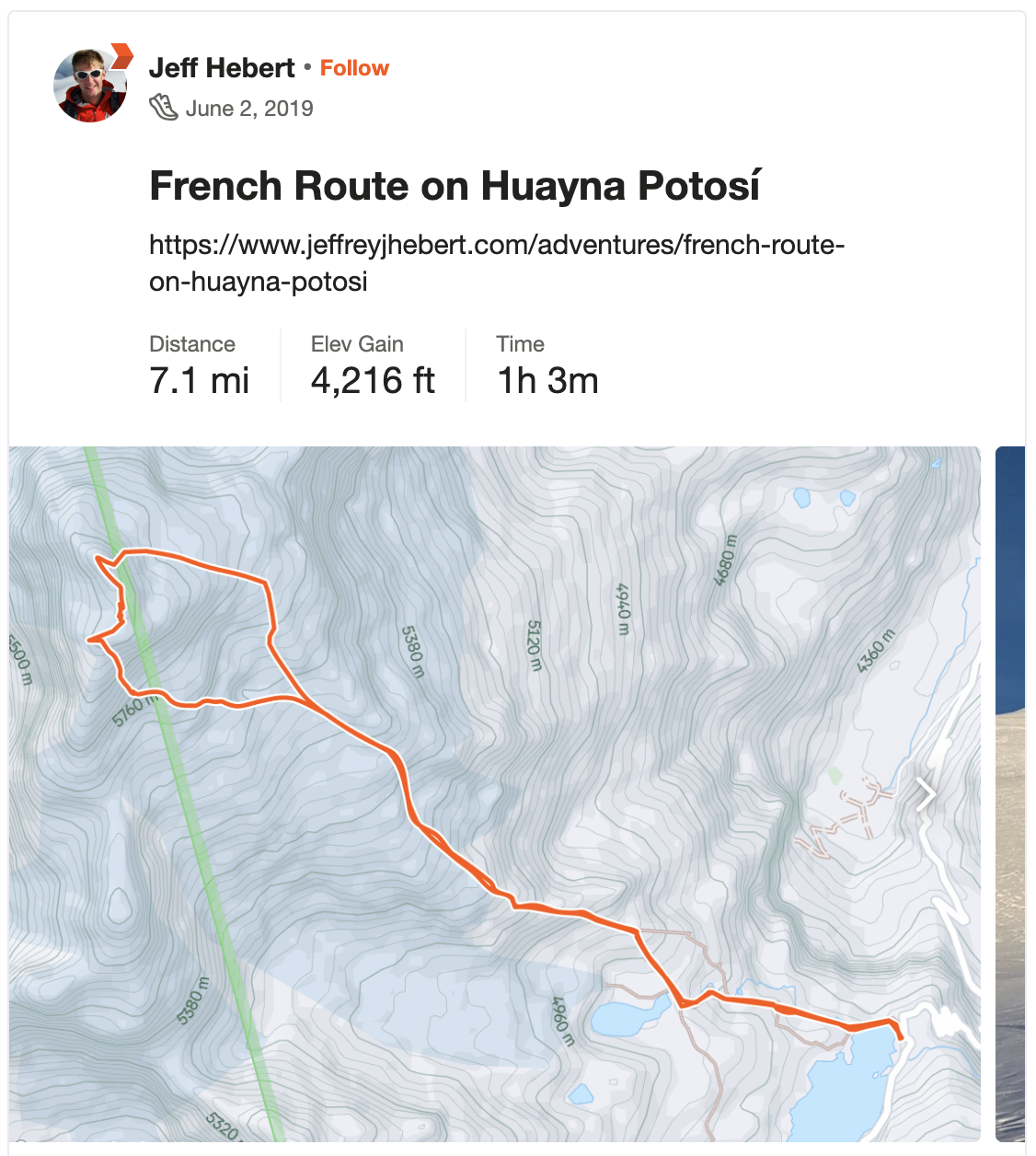Dale grabs a pickaxe and helps clear ice from the road as Illimani looms.
After Dale and I had experienced near-perfect weather, conditions, and logistics during our time in Bolivia, enabling us to climb Pequeño Alpamayo, Cabeza de Condor, Huayna Potosí, and Illampu in the span of two weeks, we debated what to do to cap off our trip. Initially, we considered an ambitious traverse of the Illimani massif, summiting the North, Central, and South peaks in a clockwise horseshoe—we were acclimatized, fit, and capable of the technical difficulties. Dale wasn’t feeling 100% following our Illampu adventure and we both had some trepidation regarding a long, cold day on high-consequence terrain all above 20,000 feet, so we decided to play it safe and do the normal route.
We phoned up our taxi driver, Manuel, from Huayna Potosi and arranged to be picked up at 8am on Tuesday. He gave us the options of Puente Roto and Pinaya, which was an easy decision since Puente Roto cut off about an hour and a half of the approach. It turned out this meant we took a completely different road, which was, in a word, rowdy. Manuel’s sedan miraculously made it after 3.5 hours of driving, including one point where Dale and I got out of the car to help clear ice off the road along with another carful of Bolivians headed to one of the tiny mountain villages along the way.
At 11:30am or so, we started hiking up the well-worn trail toward Nido de Condores (The Condor’s Nest). We took our time, knowing all we needed to do was reach camp, eat, and go to bed. The trail swept across the glacial valley and over a moraine before steeply heading up the West Spur. We made it to camp a bit after 4pm and spent some time buffing up a campsite as far off on our own as we could. A large cook’s tent and a few other individual tents were already set up in the relatively small camp area. We chatted up a Spanish group and the guides at camp before eating a dessert, having some tea, and taking a nap before dinner—one of my favorite approach day past times.
Dale, heading up the cold face
Most parties in Bolivia, especially guided ones, seem to get very early starts—typically somewhere between midnight and 2am. We didn’t see a need to do that for the normal route on Illimani and instead slept in, starting in earnest from camp at 6:30am. The route had a well-worn track and never got terribly steep. I felt comfortable with a pole and a whippet the whole way and we never roped up. The biggest danger came from a few crevasse crossings, but they were obvious and the snow bridges were solid. My only issue on the day was cold fingers and toes since we were on the West side of the peak at over 20,000 feet and didn’t see sun until near the summit ridge.
Coming up the summit ridge. Photo by Dale Apgar.
Dale on the summit
We topped out in about 4 hours, including a long walk along the low-angle summit ridge to get to the very top at 21,122 feet. After over 2 weeks at elevation and having climbed a bunch by that point, we both felt surprisingly good on top. We snacked for a bit before turning around and romping down the route in 2 hours, reaching camp at 12:30pm where we had another dessert, tea, nap trifecta. We were treated to an awesome light show that evening.
Looking out our tent
Walking down to Pinaya
Our hike out on Thursday was uneventful except for needing to hike an extra hour since the folks in Pinaya wouldn’t let our taxi up on their private road to collect us. Having to walk down the pampas with a cornucopia of farm animals and continued views of Illimani wasn’t so bad.
In the end, we were glad to have kept it low-key on this one and gotten to the top of Illimani. Now that we’ve gauged ourselves at over 21,000 feet, taking on something like the traverse seems very doable.
Great cap off to an awesome trip!


